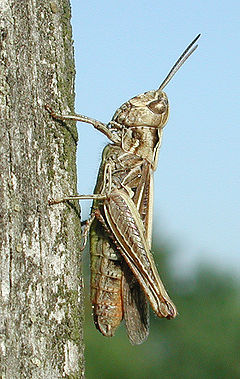As urban city environments continue to spread, more and more research is being done to measure the effects human pollution of all sorts is affecting the local wildlife. Researchers from the University of Bielefeld in Germany have recently released the results of a study focused on the mating tunes of grasshoppers. They found that the city-boy grasshoppers had a 1 to 4 kiloHertz frequency advantage over their country brothers.
Similar to crickets, grasshoppers produce tunes by rubbing their back legs against their front wings. These tunes are used for a variety of reasons, from warnings and marking territory to reproduction. When courting, male grasshoppers produce a two-part tune to attract females of the same species. It’s this tune that was being measured.
The researchers gathered nearly 200 grasshoppers from both regularly-trafficked roads and quiet, rural areas. Then they recorded their courtship tunes and compared them in relation to the noise level of the area from which they came. The roadside individuals averaged a higher volume at low frequencies as well as a higher frequency range.
The recordings were done in the quiet, controlled environment of a lab, and the roadside grasshoppers continued to be loud. This indicates that they are not just reacting short-term to louder noises but that by adulthood it is an ingrained behavior. These kind of results are the first for invertebrates, although the human effects on birds, whales and other animals have been examined.
Follow-up studies are going to try to determine at what age and stage the separation of urban and country tunes develop, and the effects of genetics on the different tunes.
The paper can be found here in the journal Functional Ecology.







